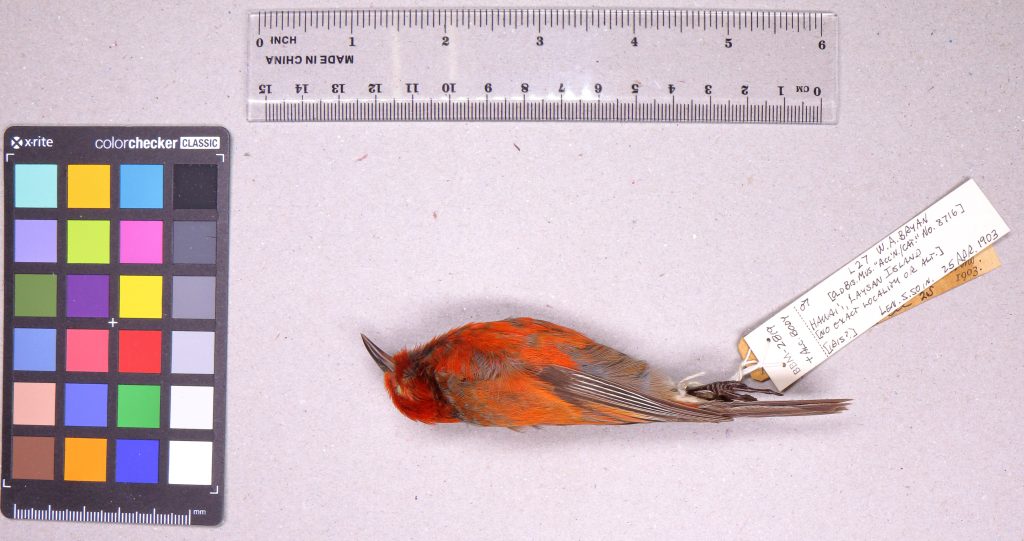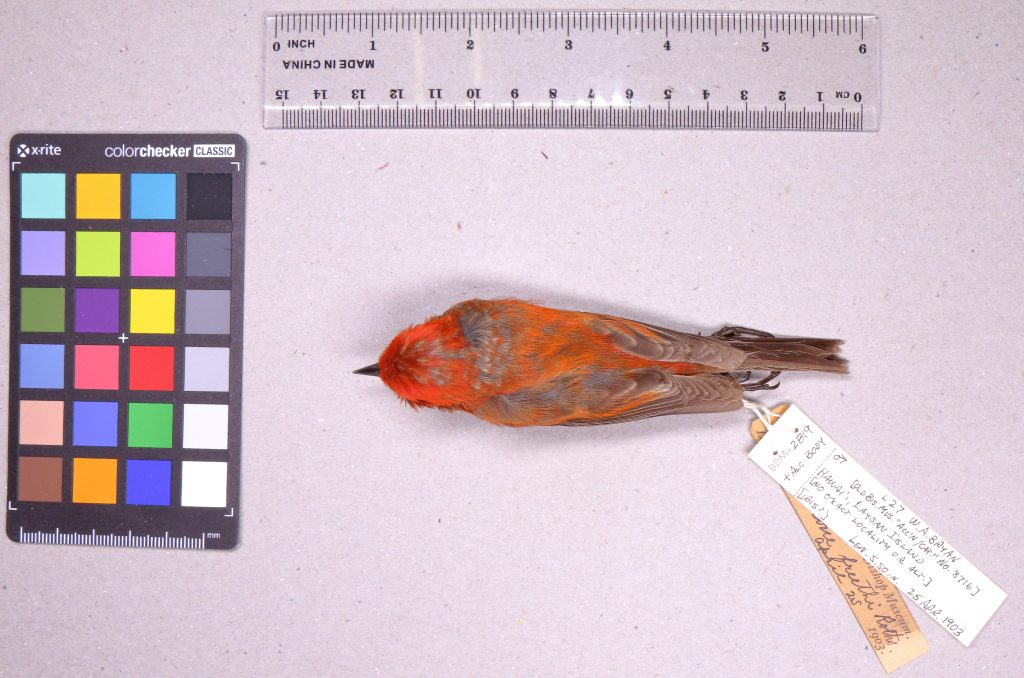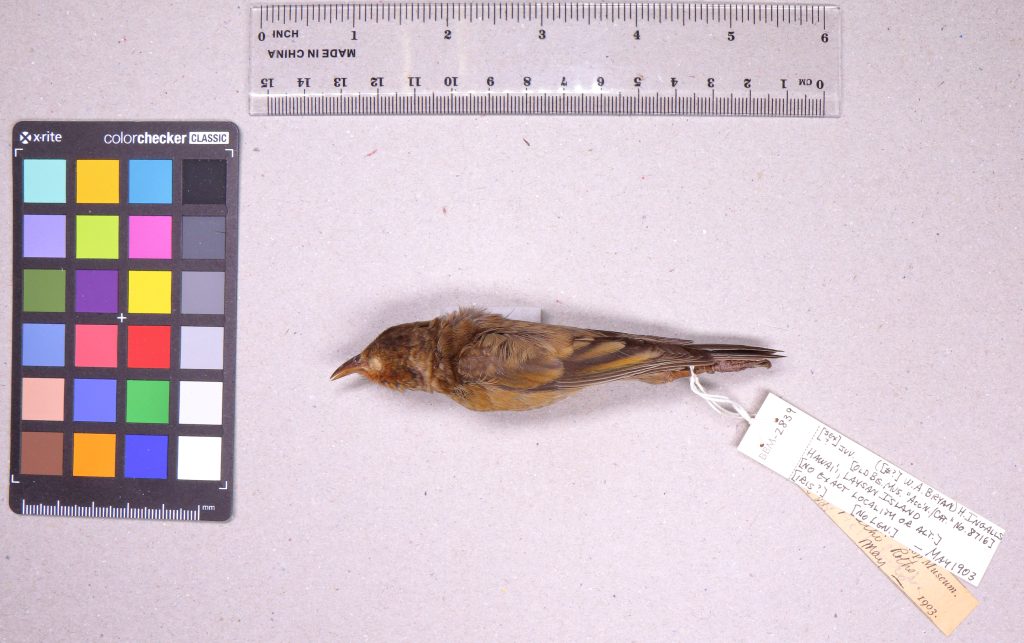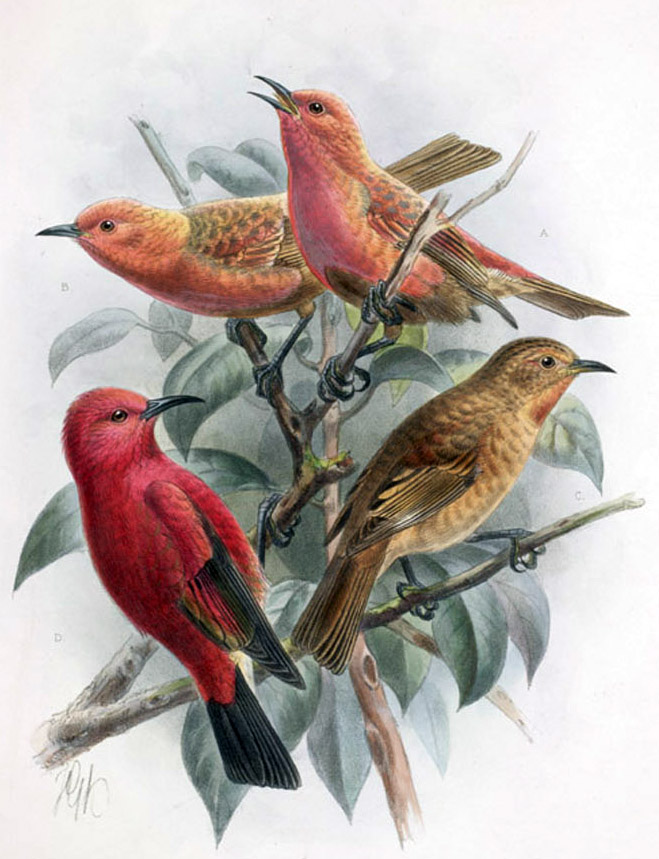Laysan ʻApapane

Names
- Common Name: Laysan ʻapapane or Laysan creeper
- Scientific: Himatione fraithii
Song
No available recordings.
Conservation Status
Extinct. Last seen in the wild in 1923.
Species Information
The Laysan ʻapapane, also known as the Laysan creeper, was a honeycreeper endemic to the northwestern Hawaiian island of Laysan. Laysan ʻapapane was one of five species endemic to Laysan (Pratt 1994). In 1828, C. Isenbeck recorded sighting of this bird feeding on nectar (Pyle & Pyle 2017). When observed in 1828, there was not an abundance of this species across Laysan Island (Pyle & Pyle 2017). The ʻapapane was observed to be red, with the female species paler than the bright male birds (Pyle 2017). The Laysan ʻapapane was last seen in 1923.
Interestingly, there is video of the Laysan ʻapapane from 1923, the last images taken of this species. The video is below.
Distribution
Endemic to Northwestern Hawaiian Islands, Laysan Island
Habitat
The Laysan ʻapapane was typically found at low elevation sites (Pratt 1994). They fed on the nectar of native flowers.
Threats
The extinction of the Laysan ʻapapane is mysterious. The European rabbits introduced to Laysan island wiped out the ʻapapane’s vegetation source (Pimm 2003). Subsequently, the soil became free, triggering a dust storm (Pimm 2003). This dust storm is suspected to have extirpated the few standing Lasyan ʻapapane, as none were to be found when the dirt and sand settled. This storm was referred to as a “three-day gale,” emphasizing the wild winds (Pyle & Pyle 2017). Along with other native species, the Laysan ʻapapane could not withstand the invasive species and storm.
Photos & Video
Additional Resources
Pimm, S. (2003). Expiry dates. Nature, 426(6964), 235-236.
Pyle, R.L., and P. Pyle. 2017. The Birds of the Hawaiian Islands: Occurrence, History, Distribution, and Status. B.P. Bishop Museum, Honolulu, HI, U.S.A. Version 2 (1 January 2017) http://hbs.bishopmuseum.org/birds/rlp-monograph/
Pratt, H. D. (1994). Avifaunal change in the Hawaiian Islands, 1893–1993. Studies in Avian Biology, 15, 103-118.





